
Wrongful Convictions affect not only the person in question but also his family and loved ones. Could you imagine spending years in prison for a crime you didn’t commit? Your whole life will change, especially once you adjust to the outside world. Join Julia Lazareck as she talks to Dr. Amanda Lewis about how wrongful convictions can happen to anyone and their ripple effect on families and society. She discusses the support that families need to get through these horrific situations. In addition to her research on wrongful convictions, she also works with incarcerated people to help them receive degrees, providing information on other available programs. This podcast will open your eyes to what can happen to anyone who is in the wrong place at the wrong time and the things you need to know to avoid it.
—
Listen to the podcast here
How Wrongful Convictions Affect Families – With Dr. Amanda Lewis
I’m here with Dr. Amanda Lewis, who received her PhD from the University of Florida in Criminology, Law and Society. Throughout her time as a researcher, she has focused on topics including prevention, rehabilitation, mental, emotional and behavioral outcomes among juveniles and young adults, consequences of prisonization reentry, psychology, law and wrongful conviction.
Her most recent project was qualitative in nature and consisted of interviews with 35 primary and secondary exonerees. She examined the impact wrongful conviction has on exonerees and their closest loved ones, exploring concentric circles of harm. That’s something we’re going to speak more about. She’s a passionate advocate for reducing mass incarceration, improving sentencing laws, providing support to incarcerated persons and their families and creating a more equitable and just legal system for all individuals.
She’s working for Georgetown’s Prisons and Justice Initiative as a professor at the DC Jail facilitating the Bachelor of Liberal Arts program at Patuxent Institution. That’s a maximum-security prison outside of Baltimore, Maryland. She’s conducting research on the initiatives’ various programs. This is going to be interesting. We’re going to learn so much. Thank you so much, Dr. Lewis, for being here.
Thank you so much, Julia. I’m excited to be here.
I’m excited to learn more about your research. It’s going to help a lot of people and families. Let’s start with concentric circles of harm surrounding wrongful convictions. That’s a lot of words. Could you break it down for us?
When there is a wrongful conviction, I almost think of it as throwing a rock into a pond. It’s the ripple effect that comes when one miscarriage of justice takes place. Let’s say that a man is wrongfully convicted of murder. First, you have the original victim and their family that are harmed. They’re going to be harmed regardless. You have this person who has been wrongfully convicted and all of their family.
Plus, depending on the case and this happens often someone is wrongfully convicted, which means that the true perpetrator goes free and then later may and in a lot of cases does commit other crimes. They may murder other people or commit other heinous acts, which then go on to have that same ripple effect. If we got it correct the first time, we could reduce the level of harm.
Although it would be very difficult to focus on all of these levels, for my dissertation and my research, I focused primarily on the exoneree or person that was wrongfully convicted. I called them the primary exoneree and then whom I termed to be secondary exonerees. This was any loved one of someone who was wrongfully convicted. Specifically, I interviewed mothers of exonerees, romantic partners, friends and siblings. I interviewed one father and one grandmother.
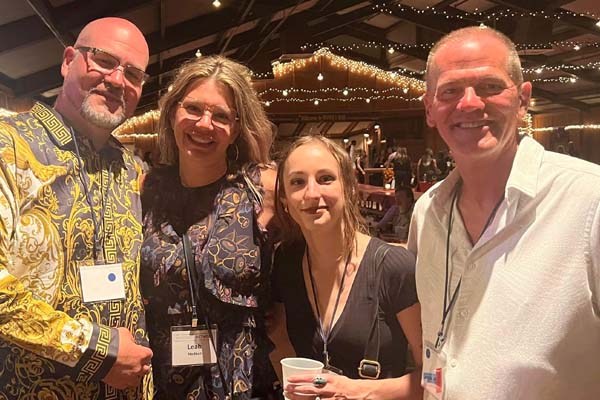
In that, I decided to focus specifically on certain relationships in my writing of the dissertation. One of the main relationships that I focused on was with mothers. I found that in almost every single case of a person that I interviewed. There were 19 total exonerees I interviewed and then 16 total loved ones in the final writeup. Every single person except maybe one who was estranged from their mother prior talked about how important their relationship with their mother was, how much their mother did for them while they were incarcerated and how they were, in some cases, the only person that believed in their innocence or the only one fighting for their innocence?
I also interviewed those mothers, so I heard their perspectives on it. I talked to them about how much they gave up or sacrificed to prove the innocence of their child, no matter what it took. I noticed early on when I started this research that I didn’t find anything about people who had been wrongfully convicted and their parents, even people that were incarcerated in general. It was hard to find information about their mothers.
Normally, we see a decent amount of research on children of incarcerated parents but we don’t often see information about parents of incarcerated children or adults. I thought that it was important to explore further. I only was able to interview four mothers for the project. That seems like a small sample size but I also interviewed all of the nineteen exonerees about their relationship with their mothers. I got it from that perspective as well.
It’s so important. With Prison Families Alliance, we have peer support groups. There are a lot of mothers in there and different family members that are affected. How it changes their lives and also how much they have to put forward is not only emotional. Whom do they talk to? There’s a stigma. Their child has been incarcerated. What did they do wrong? We know that they didn’t do anything wrong but people on the outside look at them and think that maybe they were a bad mother.
There’s all this internal turmoil that a parent would have for anything that would happen to their child but when a child is incarcerated, think of the financial and the emotional burden of having to visit them, putting money out for an attorney and finding the right support. It’s so important that they do have support. I’m glad that your research is showing that because people don’t think about it. That’s what I call the hidden sentence. They’re serving the sentence with their loved ones.
That’s why I wanted to use the word secondary because, in the research, there is a term called secondary prisonization, which is that. The loved one is doing time alongside their incarcerated family member or loved one. I wanted to extend that term secondary prisonization to become secondary exoneree in this case because even though I specifically looked at cases of wrongful conviction, so much of what I did can be applied across the board toward anyone that’s incarcerated.
Often we forget about these hidden victims. They’re victims as well. When we get it wrong, overly sentence someone or incarcerate anyone in general, we are sentencing their family to serve alongside them. I thought it was important to hear some of these stories and deeply explore what that was like for these individuals. These were cases of wrongful conviction. There was an extra level of guilt and anger combined with some of this disbelief. Many of them believed that the system was going to work the way it was supposed to work or whatever that meant.
In a couple of cases, the person that was wrongfully convicted was a child at the time. In one case, there was a sixteen-year-old boy. The mother allowed the police to come inside without a warrant. She didn’t think he did anything wrong. He didn’t do anything wrong. She was like, “You can question him.” The police ended up physically attacking him in the interrogation room until he falsely confessed. That was one case. There were other cases where there was blatant police or prosecutorial misconduct.
There is a ripple effect that comes when one miscarriage of justice takes place. Share on XThese mothers who believed the system was going to work and shake out didn’t hire a private attorney because they couldn’t afford it. With the misconduct, they lost in the trial. It’s something they would have never thought was going to happen or could have happened. Wrongfully, they blame themselves in some cases but because of this and in spite of this, they did everything they could. There was such a clear inner strength that arose in every single mother.
They’re having trouble at home while they see their child going through this but they’re also encouraging their child. When the child sees that they’re down or adult at this point but still their child, they’re encouraging their parents and keeping each other going. I called this cyclical positive reinforcement, where the family members continue to help encourage one another and fight for these cases’ release in exoneration.
This is a lot after the fact. The mother let the police in, not thinking that there was anything. There are things that the general public needs to know because people are like, “It’s not going to happen to me. It’s happening over there.” We’re both shaking our heads. We know that this can happen to anybody anywhere. It doesn’t matter your status or anything. What are some of the cautions that we can share with the families that maybe don’t have anybody that has been incarcerated but happen to be reading, which is good because they need to know this before it happens?
One of the biggest things is never to talk to the police if you’re in an interrogation setting or you’re being questioned. It sounds counterintuitive. You think, “If I’m innocent, I might as well be straightforward and cooperative,” but if you’re sitting in that chair in an interrogation because something horrible has happened to someone you love or something has occurred, it’s important that you protect yourself.
There’s not going to be a situation where whatever you tell them is going to help at that moment. You need to request an attorney. You’re either free to go or they have to give you an attorney. If you’re in custody or you’re under arrest, they have to provide you with an attorney or you can provide your own if you know someone. Otherwise, you should be free to go.
If you find yourself in that position, ask if you’re free to leave. If you’re not, you have to say, you want an attorney. People think, “I don’t want to say anything. I’m not going to talk anymore.” That would be enough. It’s not enough. You have to say, “I want an attorney. I want to invoke my rights.” Sometimes people will bashfully ask or are nervous, which makes total sense. I’m sure I would be extremely nervous in a situation like this. We see this happening to all sorts of people. It happens to mothers and children. You think it will never happen to you but it can. The police can lie to you as well.
Here’s one example I like to give in a situation where you are being questioned or interrogated. Let’s say there was a murder that took place. You were nowhere near the scene. You don’t even know the person. The police are saying, “We found your fingerprints at the scene of the crime. We found fingerprints at the scene of the crime. We know it’s going to match you. You might as well confess.”
They have interrogated you for 24 hours at this point. You’re exhausted. You want to go home. You’re thinking, “If they found fingerprints, I haven’t been there. I don’t even know this person. There’s no way they’re going to be mine. I might as well say I did this so I can go home.” A lot of people don’t think that the police can lie to them. They think the police can’t lie to them. That is not true.
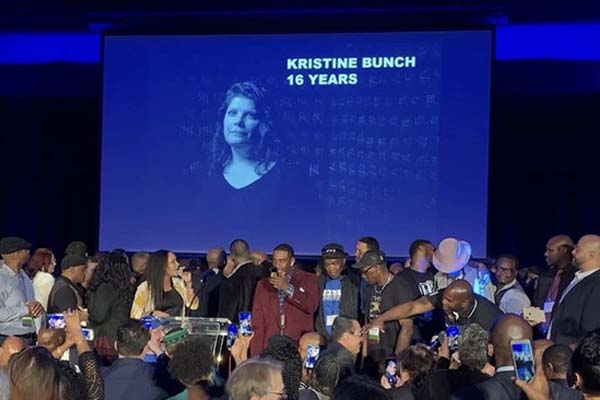
The police can lie to you. What they’re doing is they have no fingerprints. There are no fingerprints that are going to come back to exclude or exonerate you for the crime. They’re lying completely. If you say anything to incriminate yourself, it’s going to be very difficult to dig yourself out of that. Even if it’s found inadmissible in court but it’s mentioned by the prosecution and the prosecution says anything about there being a confession, that dramatically increases the likelihood that you will be convicted. Confession evidence is so strong.
Another important thing is eyewitness testimony. A mistaken eyewitness ID is a very common reason why someone is wrongfully convicted. There are certain things you need to know as a juror. You need to understand how memory works. It’s not a video camera. We can be mistaken. There are so many important factors when an eyewitness ID is made or forensic testimony is used or anything like this.
You need to understand that it’s not necessarily like on TV where they can say, “This hair matches this person to 100%.” It’s much more complex than that. We need to also be aware that defense attorneys and public defenders don’t always have the same resources that the prosecution has. As jurors, we need to be very skeptical and aware of the different access that the prosecution and the defense have. If there is any reasonable doubt, you should vote to acquit someone.
All of that is helpful and things that people don’t think about but I want to go back to the police law. When you say police lie, not all police lie, I want to clarify. There are extenuating circumstances that they would call interrogation strategies. I wanted to clarify that if there is a police officer or somebody in law enforcement that’s reading and says, “I do everything I can to help them.” There are all kinds of strategies that law enforcement uses. Some of them are done to try to get the person to say that they did something. That’s important. We were talking about the concentric circles of harm surrounding wrongful convictions. Where did that term originate?
I wanted to give credit to Jennifer Thompson. Are you familiar at all with the book Picking Cotton?
I’m not.
I’ll briefly give some information about the book, her case, why she’s such an important person in the field and also specifically Ronald Cotton, who was an individual that participated in my study but is also a famous wrongful conviction case. I don’t want to get the years mixed up but I believe in the late ’80s or early ’90s, Ronald Cotton was convicted for the rape of Jennifer Thompson in North Carolina.
The only evidence against him was a mistaken eyewitness identification. After about 9 or 10 years, they tested the DNA in the case. It came back as a match to another individual who had been convicted of other rapes, Bobby Poole. He and Ronald Cotton looked similar to one another. Upon being told that Jennifer Thompson had this other individual matched as her perpetrator, it took her some time to come to grips with the fact that she had identified the wrong person.
When you incarcerate anyone in general, you are also sentencing their family to serve alongside them. Share on XShe felt personally responsible for his incarceration at this point or his wrongful conviction but over time, the two of them, Ronald Cotton and Jennifer Thompson, met and became friends. They became advocates in the fight against a wrongful conviction, specifically looking at mistaken eyewitness identification and what the best practices are.
They wrote the book Picking Cotton. It’s told from both their perspectives. I had the pleasure of interviewing Ronald Cotton for the project. In 2019, I was at the Innocence Network conference. I highly recommend that anyone interested in wrongful conviction or fighting against miscarriages of justice, improving the system at all and ensuring that mistakes like this don’t happen to attend one in their lifetimes or look at the work that the Innocence Project is doing.
In a conference setting and a presentation, Jennifer Thompson used the word concentric circles of harm. She was specifically talking about the original crime victim, how they are connected with the exoneree and the exoneree’s family, how they’re all victimized by this and the fact that in her case specifically, Bobby Poole went on to rape at least eighteen other women. When you think about a trauma happening, that trauma not only affects the person it happens to but every single person around them.
In that case, it’s horrific to know that those were the numbers but that’s how she used the term concentric circles of harm. I love the term. It’s a good example. It’s hard to encapsulate everyone that is harmed. When you’re doing a research project or focusing on something, you have to focus on that but it’s a good way to map out all of the harm done. You can focus on each piece and see how each person or each individual that is touched by a case or incarceration in some way is impacted.
Do you think it’s that they want to find somebody to convict for a crime and maybe don’t have the resources, the time or even the ambition to find the actual perpetrator?
There are so many different reasons that it does happen. I can break down some of the numbers and statistics on it. Lack of resources is a huge issue. It often happens in smaller towns or areas where maybe they aren’t used to lots of crime occurring. In particular, when especially heinous crimes happen, multiple murders or gruesome murders, there are things that you want to blame someone or have some solution for immediately.
I believe in those cases, there is a jump, “We need to convict someone, put someone behind bars and ensure that the community is safe.” Often, mistakes are made because of this drive to convict someone immediately. We need to get away from that and especially correct something called tunnel vision. Let’s say that there’s a case where maybe someone who had been previously convicted of a crime happened to be in the same area at the time another crime occurred.
The police say, “This guy would be a good suspect.” Instead of investigating more broadly and looking at all the options, they start honing in on that one person. They start looking at the facts. It’s not just the police but other people involved to the point where opinions or decisions are swayed in a way that falls in favor of that individual looking guilty and becoming guilty. Slowly over time, if you have police, forensic examiners and eyewitnesses doing that and they’re reassured, “We think this is the guy,” it compiles to the point where it can be easy to convict an individual wrongfully.
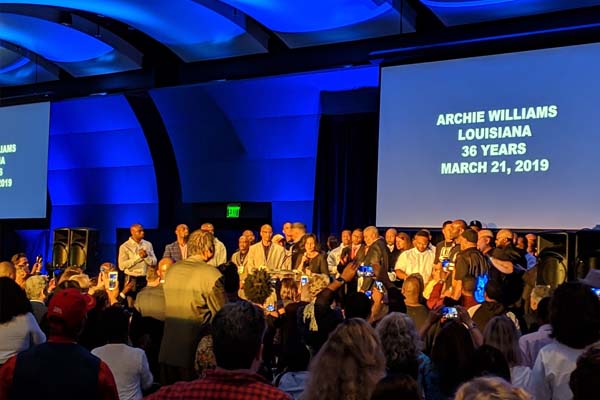
I wanted to add that they could be convicted of a crime when they were young. It could have been a small drug charge or they stole something. When they’re older, many years later, they’re in the wrong place at the wrong time. They found that they had this previous conviction years ago. That ups the ante that this person could have done it even though it was so many years ago.
The other thing too is what you’re talking about with Mr. Cotton. He looked like somebody. That could happen to any of us. We could have a similar name to somebody or look like somebody. We were talking about this. When somebody goes into prison, especially when they’re young, how can the family help that person? What is the mindset of that person when they get out, whether they have been exonerated or served their time?
Regardless if the person is guilty or not guilty, being incarcerated does change an individual. I was talking to one of my students about it, who’s incarcerated in Maryland. He said that he has been inside longer than he has been outside because he first went in at fourteen. Even though he came out for a few months around the age of twenty, he was raised in prison.
You find that with a lot of individuals. Something that I’ve noticed among those that I’ve interviewed or friends of mine who were formerly incarcerated is the adjustment. Once you get out, it’s very difficult. Depending on how long you were inside is a factor in how well you adjust. The biggest and most important factor though to improving adjustment outcomes once you are released is having a strong social support network. That’s once you get outside but also during the time inside.
If you have relationships with people while you’re inside, you talk to people on the phone regularly and during visitations regularly, it helps a lot when you’re adjusting to the outside. A big piece of that too is that those individuals or supportive persons have to be patient and understanding but they need support too because no one prepares them for what it’s going to be like when that person gets out, the PTSD that they have and the trauma that they have experienced.
They want to shower with their shoes on. They might have panic attacks in the grocery store picking out toothpaste because they are put into a situation where they don’t have to make many decisions. Every day was similar. One of the guys mentioned that every day was like Groundhog Day in a certain facility in Maryland that he was in. Everything was the same.
Now, they’re out in a world where they have to find a job immediately and a place to live, make a bunch of decisions and create new routines in a place where they have been used to not trusting anyone, being guarded, not having one-on-one relationships and not being touched to being outside in the community where they’re bombarded and overwhelmed with all these things. It can be difficult for them to get through the day-to-day at first. It’s something that’s going to affect them always if they have been incarcerated.
I’m going to put a plug in here for Prison: The Hidden Sentence because we are offering workshops to the families to help prepare them for when their loved one comes home because it’s not the same person. You were saying that especially when they’re younger and they come out 3, 5 or 10 years later and they go in at 18, their mindset is still that of an 18-year-old because they haven’t experienced life on the outside.
The police can lie to you, so always ask for your attorney. Share on XIt’s so important that we do help the families. That’s something Prison: The Hidden Sentence does too along with Prison Families Alliance that provides a support group. With everything that you’re saying and working with people that are coming out and their families, it’s important that we support the family so that they can support their loved ones. Let’s talk about what you’re doing. You’re talking about your students but your students are incarcerated.
Briefly, I wanted to reiterate what you said about the age issue. That was something I looked at in my dissertation. I turned to age stagnation. I use stagnation because it’s a lack of activity, growth or development. What I’ve found is that this lack of development or experience in the outside world causes individuals that had been incarcerated to have a distorted view of their age. They described it as feeling frozen in time or emotionally or socially stunted. I believe it comes from a few things. There are a few factors that are important in understanding this.
It’s not that it didn’t happen to individuals that were incarcerated at an older age but I did notice it happening to a greater degree or being more impactful for those who went in at a younger age. Something to keep in mind is your prefrontal cortex or the part of your brain that is in charge of decision-making and judgment, is not fully developed until age 25. If you’re incarcerated at that age, you’re developing in that environment. You’re not developing on the outside. Another thing is you’re missing out on normal development activities. You’re not dating like you normally would be. You may not have the same social relationships or interpersonal relationships.
When you get out, you’re learning how to do those for the first time. That can be hard on family members, especially romantic partners because your romantic partner might be the same age as you but you’ve never lived with a romantic partner. You’re learning how to do those things while learning how to be in a relationship on the outside and living in a total institution away from society. Socialization and intimacy are discouraged. You’re not going to be able to mature emotionally in the same way.
I’m wondering. Is there anything that the family or friends can do knowing that if somebody goes in at a young age to help stimulate their brain and things they can share with them or send them?
I hate that so much of this falls on the family in some ways too because it needs to be an institutional change. We need to allow more contact between incarcerated individuals and their families and their loved ones so they can have those moments. It’s going to take some time before we get there but it’s even having conjugal visits, family days and different things that you can do to allow some of that interpersonal contact and relationship with your family that would normally occur on the outside.
Sharing with your loved one your experiences and peer relationships are important too. Even if it’s someone that’s inside being friends with someone else inside, they can explain, “This is what happened to me. This is what this relationship was like with me.” You can learn vicariously through them but there’s sometimes no substitute for what’s happening. You’re living through it. It’s sharing your experiences, learning and being patient and understanding as the loved one of that incarcerated individual.
They might have to learn and make some mistakes. They might get out. Some of the behaviors that they have might be similar to that of a 16-year-old boy if they went in at 16. It might take them a little bit of time to get some of that stuff out of their system where they’re learning and making some of the mistakes that you might have made in your early twenties, whereas they didn’t have the chance to do that.
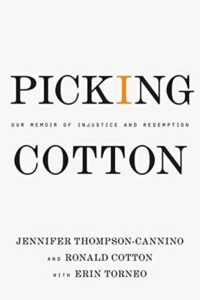
That’s helpful. The more that we educate the families, the more they can do. It would be nice if it came from the institutions. However, until that happens, we’ve got to rely on the family members.
It’s having a support group. Many of the mothers and loved ones that I interviewed didn’t have a support group like your offer, which is amazing that you have ways to help prepare individuals for when their family members get out but also offer support for them during because you need someone that has been through the same experience.
If you have two women whose romantic partners were incarcerated and they get out around the same time, then they can call them and say, “My boyfriend is doing this thing. He did the same thing.” You can relate to one another in a way that the average person cannot. That’s so important with any experience that you have. You need people that can relate to you.
I talked to one of my students. I asked him if he does have a social support network for when he gets out and what that is like. He described how hard it was for him to open up to people. He didn’t necessarily get along with a lot of people that were incarcerated. That’s important to think about too. You’re not always going to get along with anyone because they have been doing the same thing.
Part of that is having more systems where people can open up while they’re inside and have more safe spaces for them inside because if we can have more spaces that aren’t lacking trust, aren’t violent and have better rehabilitation, connection and education systems with inside the prison, that will allow you to have some of those experiences.
Tell us more about what you’re doing. You’re helping people on the inside, which helps families on the outside.
I hope that we’re changing the culture in some way. I work for Georgetown’s Prisons and Justice Initiative. It was founded by Marc Howard. Interestingly, he got interested in some of this stuff because his childhood best friend was wrongfully convicted when they were seventeen years old. His name is Marty Tankleff. That’s whom I met that introduced me to this group. He was wrongfully convicted at seventeen. I believe he was incarcerated for seventeen years until he was exonerated. He’s an attorney and an adjunct professor at Georgetown.
There are numerous different programs that our initiative offers. One of those is a Bachelor of Liberal Arts degree for prisoners in Maryland. It is a five-year program where each individual involved will earn a Bachelor’s degree from Georgetown. We’re starting with a cohort of 25. That was in 2021. We will have the next cohort coming in. It’s another 25. That will continue until 2027.
You need a strong social support network so that you can easily adjust once you're released from incarceration. Share on XI was brought in a temporary assignment where I was the site monitor and facilitator. I would come in and open it every day. I would help the professors get set up, tutor, fill in any gaps that were needed and be there to support all the students as an academic advisor for them. We worked through statistics. It has been hard dealing with some of the administration because it’s hard for them to accept that they’re inmates. They would call them inmates. They are getting a Bachelor’s degree from Georgetown.
There have been some growing pains but honestly, they’re the most respectful students that I’ve had in the time that I’ve been teaching as a professor. They’re incredibly engaging, intelligent and respectful. We have had hundreds of applicants across the state of Maryland. We have had to choose 25 for each cohort, which has been difficult. Do you have any questions about what the day-to-day is like? I can also talk about some of the other programs that Georgetown’s PJI offers if you want.
Hearing about the programs gives people on the outside hope through maybe some of the other programs that are being offered.
In addition to the Bachelor of Liberal Arts or the BLA program, we also have the Scholars Program at the DC Jail. As we know, people that are incarcerated in jail are often there for shorter periods. They might be awaiting trial or sentencing or serving a shorter sentence of around a year and a half. That’s usually the maximum. Although we can’t offer the same Bachelor’s degree program there, we offer credit and non-credit-bearing courses. Each semester, we will have between 3 and 6 courses offered.
While individuals are incarcerated in jail, they can start earning credits towards their Bachelor’s degree. I’ll be teaching a qualitative methods class there in the fall where I’m going to have my students interview one another, observe situations and interactions within the DC Jail and then write a research paper on their experiences and the experiences of their classmates.
Some of the other programs we offer are cool. We have a paralegal program. This is for formerly incarcerated individuals to earn a paralegal certificate. They end up going to get jobs at some great law firms in DC doing paralegal work. We have the Pivot Program, which is designed for formerly incarcerated individuals to earn business degrees.
Another one of the most interesting programs/classes we have is called Making an Exoneree. It’s run by Marc Howard, our Executive Director and Marty Tankleff, who is an exoneree, the one I mentioned earlier. He has gotten his law degree and is an attorney as well. What they do is fascinating. I am super excited to work with them. They take fifteen undergraduate students from the university. You have to apply to get into the class and make a video of why you should be chosen to participate.
Fifteen of them would get chosen. Five wrongful conviction cases are picked. These are cases in which we believe someone to be incarcerated that is currently wrongfully convicted. Not someone that has been exonerated but someone that’s still inside. What they do is in groups of three, the students reinvestigate the cases and create documentaries about each case in the hopes of leading to their release or finding some information that can help exonerate them.
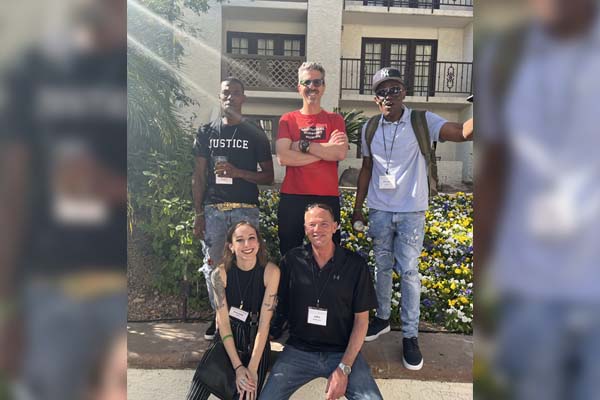
At this point, I believe we have helped release 3 or 4 individuals. I believe two of those were complete exonerations. The Pivot Program is a non-credit-bearing certificate in business and entrepreneurship. It’s created specifically for formerly incarcerated individuals. These are the few programs that we offer. Honestly, the group of people that I work with is amazing.
They all care about this work and want to reform the justice system seriously. Being involved in any of these programs and working with these individuals rubs off. You can see how big of a difference could be made if all prisons were doing things like this or all universities had an initiative like this. What a larger ripple effect we could have in the opposite direction.
This gives a lot of hope to families. I was wondering about the people that you picked. I’m sure if somebody is reading this and they have a loved one that’s incarcerated and they know that they’re innocent, how do you find these cases? Can they be submitted? Is it something that you have a list that you go through?
I can give you a link to the form that needs to be filled out to apply. They fill out a document about their case. Two of the things that we’re looking for are going to be, “Is it a well-known case or a not well-known case?” It’s one of the things that the class is designed to do. They’re not attorneys. They’re undergraduate students that are going to make a documentary. The two main things that they’re going to do are hopefully get some publicity for the case and reinvestigate the case.
Two general things that we look for are these. Will the case benefit from publicity? Is it a well-known case that has already been covered in podcasts or a documentary? Is it something that no one has ever heard of and could benefit from that? Do we believe the person is innocent, looking at the facts, the original acts of the conviction and the cause for innocence? What does the re-investigation look like? Has it already all been done? Do we have witnesses that are going to recant or are saying they changed their testimony from the beginning or an eyewitness who says that they weren’t sure about whom they picked and they have changed their mind?
Things like that are what we’re looking for. What is the value of doing a re-investigation and publicity? That makes us unique in a way because a lot of the innocence projects are only accepting DNA cases, Shaken Baby cases or whatever it may be. For us, it’s a unique way to get some exposure and help. I wish we could take these cases, fully work them out legally and represent everyone but we offer something unique that I hope will benefit some people that need it.
That sounds wonderful. The Innocence Project and some other organizations that help people are overwhelmed because there are so many cases out there but this is another avenue. You shared so much information. It’s going to help a lot of people. We shed light that it’s not only the person that’s incarcerated. It’s that ripple effect or that stone in the pond. It ripples through society. This is something we all need to know about. I want to thank you for your time. We will talk again as you do more research. We can have another conversation.
Thank you so much. I appreciate you having me on. I look forward to talking to you again.
Thank you.
—
We’re offering workshops like reentry for families on the outside to prepare them for when their incarcerated loved ones are released. You can sponsor someone to attend one of the Prison: The Hidden Sentence workshops for as little as $50. If you’re looking for ways to advertise your business, you can promote your business on the show. For more information, email Contact@PrisonTheHiddenSentence.com. You can also purchase the Prison: The Hidden Sentence book on Amazon.
Important Links
- Dr. Amanda Lewis
- Prisons and Justice Initiative
- Prison Families Alliance
- Picking Cotton
- Innocence Network
- Innocence Project
- Prison: The Hidden Sentence
- Scholars Program
- Pivot Program
- Making an Exoneree
- Contact@PrisonTheHiddenSentence.com
- Prison: The Hidden Sentence
- https://www.ProQuest.com/docview/2674370049?pq-origsite=gscholar&fromopenview=true
- https://www.DCProjectConnect.com/
- https://www.HealingJusticeProject.org/
- https://www.Airtable.com/shrYQAHb974M26i7q
About Dr. Amanda Lewis
 Dr. Amanda Lewis grew up in Western North Carolina and earned a dual bachelor’s degree in philosophy and psychology from the University of North Carolina at Chapel Hill. Afterwards, she went on to graduate school and earned her M.A. and Ph.D. from the University of Florida in Criminology, Law, and Society. Her masters’ project focused on the use of mindfulness-based meditation programs to prevent mental, emotional, and behavioral problems among juveniles and young adults.
Dr. Amanda Lewis grew up in Western North Carolina and earned a dual bachelor’s degree in philosophy and psychology from the University of North Carolina at Chapel Hill. Afterwards, she went on to graduate school and earned her M.A. and Ph.D. from the University of Florida in Criminology, Law, and Society. Her masters’ project focused on the use of mindfulness-based meditation programs to prevent mental, emotional, and behavioral problems among juveniles and young adults.
Now, her research focus is predominantly on wrongful conviction and legal psychology. For her doctoral dissertation, she conducted a large-scale qualitative research project which examined the total impact a wrongful conviction has on exonerees and their closest loved ones.
Though her background is heavily academic, she recently moved to Washington D.C. where she is pursuing a career that will allow her to advance criminal legal reform through policy. She is a passionate advocate for reducing mass incarceration, improving sentencing laws, providing support for incarcerated persons and their families, and creating a more equitable and just legal system for all individuals. Currently she is working for Georgetown’s Prisons and Justice Initiative as a professor at the DC Jail, facilitating the BLA program at Patuxent Institution and conducting research on the initiative’s various programs.
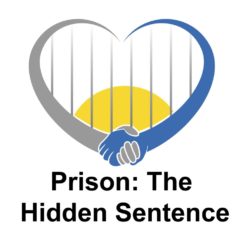
Leave a Reply